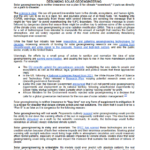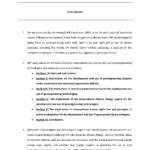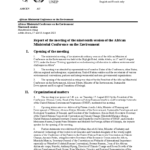What Is Geoengineering?
Geoengineering refers to large or planetary-scale interventions in the Earth’s atmosphere, oceans, and soils with the intention of counteracting only some of the effects of climate change. These methods range from reflecting sunlight to removing carbon dioxide from the atmosphere. These highly speculative technologies cannot be a substitute for or supplement to real climate action. Geoengineering would not address the root causes of climate change but proposes to mask its effects, presenting significant new risks.
Key Concerns of Geoengineering
- A dangerous distraction: Geoengineering does not address the root causes of the climate crisis. Instead, it creates the illusion of a quick ‘fix,’ delaying real solutions to the climate crisis and prolonging reliance on fossil fuels.
- Massive scale and unknown consequences: For geoengineering to achieve its intended impact, it would have to be deployed at a massive scale. This would have significant environmental, political, and social consequences.
- Limits of research: It is impossible to test geoengineering technologies for their intended impact on the climate without large-scale outdoor deployment, which could potentially lock in harmful or even irreversible effects.
- Unpredictable risks: Geoengineering is inherently unpredictable and poses significant, new, and unprecedented risks to the fragile ecosystems that sustain life on Earth and are our best allies in the fight against climate change. Many geoengineering technologies involve deliberate environmental pollution, potentially over decades or even centuries.
Despite geoengineering being at odds with international law and subject to a de facto global moratorium, an alarming number of outdoor experiments are planned or underway. Many of these experiments involve selling carbon credits or offsets and are driven by carbon markets.
What Are the Risks?
Climate Impacts
Geoengineering would do nothing to tackle the root causes of the climate crisis. The Intergovernmental Panel on Climate Change (IPCC) has warned that these technologies are not a credible solution because of both their extreme impacts and their enormous uncertainties.
Carbon Dioxide Removal: Various techniques propose enhancing the oceans’ natural ability to sequester carbon, but there is no evidence that they would durably store it. Some studies even suggest that these methods could have the opposite effect and undermine natural ocean carbon sequestration. Moreover, the impact of mining and the transportation of minerals used in some of these approaches would result in substantial carbon emissions.
Solar Geoengineering: SRM is inherently unpredictable and risks further destabilizing an already destabilized climate system. Models show that it would have an uneven regional effect and could exacerbate climate change in countries on the front lines of the climate crisis. There is also a risk of termination shock, where a sudden halt in deployment could lead to a rapid increase in temperatures.
Rights, Justice, and Equity
The United Nations Human Rights Council’s Advisory Committee has warned that geoengineering technologies could significantly infringe on human rights for “millions and perhaps billions of people.” It has also drawn attention to the disproportionate impact on those who have done the least to cause the climate crisis, including communities in the Global South, Indigenous Peoples, peasants, and fisherfolk.
Certain geoengineering techniques could also have far-reaching and uneven impacts, creating real difficulties in identifying attribution in relation to extreme weather events. For example, solar geoengineering could cause droughts and disrupt monsoons, leading to a cascade of disastrous consequences.
Some geoengineering methods, such as bioenergy, carbon capture, and storage (BECCS), would need twice the entire global land area currently under cultivation to have any meaningful climate impact — raising the risk of land grabs and jeopardizing food security. Marine geoengineering techniques such as seaweed plantations could have devastating impacts on the food systems and livelihoods of coastal communities.
Disrupting or polluting Earth systems without addressing the root causes of the climate crisis is unjust to future generations. The Maastricht Principles identify geoengineering as a potential violation of State obligations to protect the rights of future generations, particularly techniques such as stratospheric aerosol injection (SAI), which proposes spraying particles into the upper atmosphere over decades if not hundreds of years to partially block the sun. Technologies such as SAI risk locking future generations into the continued use of these technologies or dealing with the consequences of termination shock.
Environmental Impacts
Geoengineering intervention in Earth systems jeopardizes the ecosystems that are crucial to sustaining life on Earth and fighting climate change. For example, with dozens of marine geoengineering experiments planned or underway, the vast and poorly understood ocean ecosystems face significant risks. These marine geoengineering interventions risk altering their delicate equilibrium, species interactions, and food chains, with significant consequences.
Many forms of geoengineering involve intentionally polluting the environment. For instance, SAI involves releasing sulfur compounds — known to cause acid rain and harm the ozone layer — into the upper stratosphere. Similarly, ocean alkalinity enhancement — a marine CDR theory involving dumping large quantities of minerals in the ocean — poses various threats to marine ecosystems depending on the materials used.
Other geoengineering approaches, such as industrial seaweed farming and BECCS, require monoculture plantations on an epic scale. Monocultures reduce biodiversity, cause soil erosion, and increase vulnerability to disease and pests. In the case of seaweed mega-farms, these can lead to giant algal blooms that starve the ocean of oxygen and harm marine life.
Global Response and the Call for Non-use
- Indigenous Peoples are at the forefront of resistance to geoengineering, particularly against outdoor solar geoengineering and ice management experiments conducted in their territories that do not respect their right to Free, Prior, and Informed Consent (FPIC). They have rejected these projects in Sweden and the United States — including Alaska — and view them as a violation of their rights and a false solution embedded in the frameworks that created the climate crisis.
- Civil society and the climate community worldwide continue to say ‘no’ to geoengineering. The Hands Off Mother Earth (HOME) Alliance, an international civil society network of nearly 200 organizations from over 45 different countries, from the Global South and the Global North, was launched in 2010. HOME later released a Manifesto denouncing geoengineering and calling for an immediate halt to all outdoor experiments. The Climate Action Network International, the largest global climate coalition, unequivocally opposes solar geoengineering and endorses the Solar Geoengineering Non-Use Agreement.
- More than 500 leading academics from over 50 countries are calling for an International Non-use Agreement on Solar Geoengineering. A non-use agreement would reject deployment, outdoor experiments, and patenting and stop taxpayer funds from supporting the development of solar geoengineering technologies. Nearly 2000 civil society organizations endorse the agreement, while the African Ministerial Conference on the Environment and the European Parliament have called for a non-use mechanism. A non-use agreement or mechanism would build on and strengthen existing obligations under international law.
- International Law and Governance. Geoengineering has been restricted by a de facto moratorium under the Convention on Biological Diversity since 2010. States Parties to the London Convention and London Protocol, which regulates pollution at sea, are seriously considering expanding its 2008 prohibition on ocean fertilization to include four additional categories of marine geoengineering techniques. The development and deployment of geoengineering technologies are also inconsistent with a wide range of legal obligations and principles under international law, including:
- Human rights obligations, from the right to life to children’s rights
- Indigenous Peoples’ right to Free, Prior, and Informed Consent
- Rights of access to information, participation in decision-making, and access to justice
- The precautionary principle
- The obligation of States to prevent transboundary environmental harm
- States obligations not to pollute the marine environment under the UN Convention on the Law of the Sea
Real Solutions to the Climate Crisis
Rather than pursuing speculative technologies, governments should urgently prioritize real solutions to the climate crisis. This includes equitably phasing out fossil fuels, adopting sustainable production and consumption practices, and requiring high-income countries to provide climate finance in accordance with their fair shares. For an equitable and effective response to the climate crisis, it is vital that we protect the forests, oceans, and polar and other ecosystems threatened by geoengineering and the rights of communities and Indigenous Peoples in direct relationship with those ecosystems.
Resources:
 |
Why Geoengineering is a False Solution to the Climate Crisis (October 2024)This is the first in a multi-part series exposing the threats and risks connected to geoengineering and why these technologies must not be considered effective climate action. Read more |
 |
Political Momentum for a Solar Geoengineering Not-Use Agreement Growing (September 2024)A step forward on the journey to achieve an International Not-Use Agreement on Solar Geoengineering Read more |
||
 |
Environmental Groups Urge Alameda Council to Reject Risky Geoengineering Experiment (May 2024)A call to the Alameda Council to halt a dangerous geoengineering experiment. Read more |
||
 |
Climate-vulnerable States Successfully Block Dangerous Solar Geoengineering Push at UNEA-6 (February 2024)A victory for climate-vulnerable states in resisting harmful solar geoengineering. Read more |
||
 |
Misguided Climate Report Sidelines Proven Methods for Speculative Technologies (September 2023)Critique of a climate report that overlooks effective methods for speculative technologies. Read more |
||
 |
Global Concerns Over Marine Geoengineering Echo Worldwide (October 2023)A global stand for regulations on marine geoengineering. Read more |
||
 |
Europe’s Response to Solar Geoengineering Must Uphold Precautionary Principle (June 2023)Europe’s need to reinforce governance on solar geoengineering. Read more |
||
 |
CIEL Welcomes Mexican Government’s Solar Geoengineering Ban (January 2023)Support for Mexico’s ban on solar geoengineering technologies. Read more |
||
HOME Alliance Press Statements & Blogs |
|||
 |
HOME! Alliance Closing Blog from Bonn Climate Conference 2024 (July 2024)Reflections and outcomes from the Bonn Climate Conference. Read more |
||
 |
HOME! Alliance Statement on Marine Geoengineering Experiments (May 2024)Position on marine geoengineering experiments. Read more |
||
Media Briefs |
|||
 |
Geoengineering & Human Rights (September 2023)An overview of the human rights implications of geoengineering. Read more |
||
 |
Debunking Solar Geoengineering (September 2023)Addressing misconceptions about solar geoengineering. Read more |
||
 |
Solar Geoengineering and Misinformation (September 2024)Addressing misinformation and disinformation about solar geoengineering. Read more |
||
Reports |
|||
 |
The Risks of Geoengineering (October 2024)Examination of the biodiversity impacts of some of the most commonly discussed geoengineering approaches and how, rather than tackling the climate crisis, geoengineering could exacerbate it. Read more |
||
 |
Fuel to the Fire: How Geoengineering Threatens to Entrench Fossil Fuels (February 2019)Examination of geoengineering’s role in perpetuating fossil fuel dependency. Read more |
||
Geoengineering Monitor |
|||
 |
Geoengineering Monitor WebsiteCritical perspectives on geoengineering, a joint project of ETC Group and Biofuelwatch. |
||
 |
Geoengineering Monitor MapMap of planned or ongoing geoengineering experiments. |
||
Joint Analysis |
|||
 |
Lost in Translation: Lessons from the IPCC’s Sixth Assessment (March 2023)Analysis of IPCC’s report on fossil fuels and false solutions. Read more |
||
 |
IPCC Unsummarized: Warnings on Overshoot and Techno-fixes (April 2022)Unmasking clear warnings on climate justice and techno-fixes. Read more |
||
Legal Opinion |
|||
 |
HBF Joint Legal Opinion on Geoengineering Restriction (March 2021)Legal perspectives on restricting geoengineering under international law. Read more |
||
Climate Action Network International |
|||
 |
Debunking Dangerous Distractions: SRM Fact Sheet (December 2023)Fact sheet on Solar Radiation Modification (SRM). |
||
 |
CAN Position on Solar Radiation Modification (September 2019)Position statement on SRM technologies. |
||
Solar Geoengineering Non-Use Agreement |
|||
 |
SGNUA: Solar Geoengineering Non-Use AgreementOverview of the Solar Geoengineering Non-Use Agreement. |
||
 |
SGNUA: Briefing Note (January 2023)Briefing myths about Solar Geoengineering Non-Use Agreement. |
||
International and Regional Resolutions |
|||
 |
European Parliament Resolution on COP28 (November 2023)European Parliament’s stance on geoengineering at COP28. Read more |
||
 |
African Ministerial Conference on the Environment Decision 19/5 2023 (May 2023)African Minister’s stance on geoengineering at the 19th session of the African Ministerial Conference on the Environment. Read more |
||
